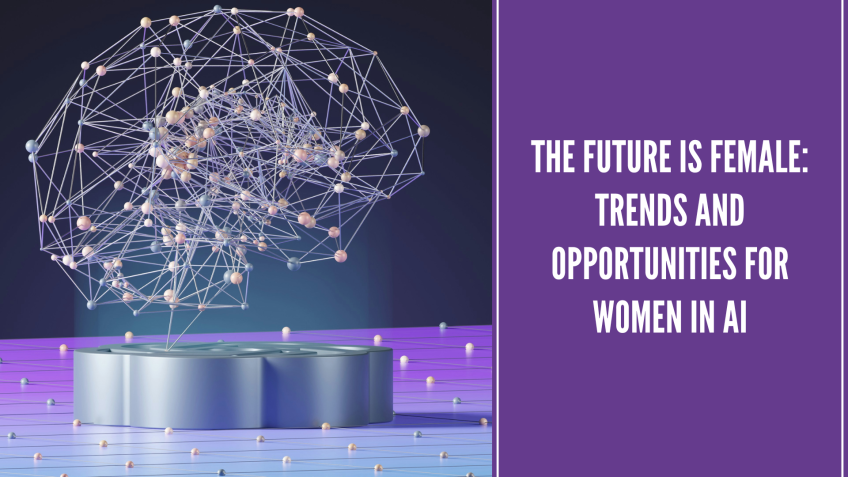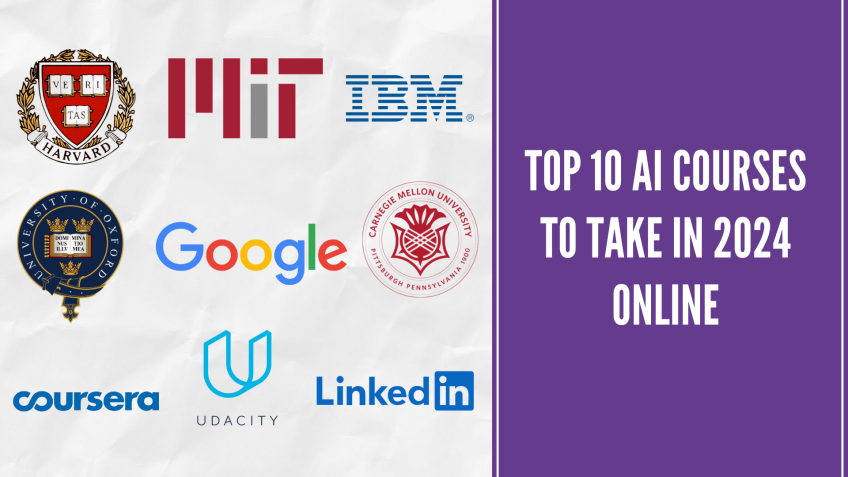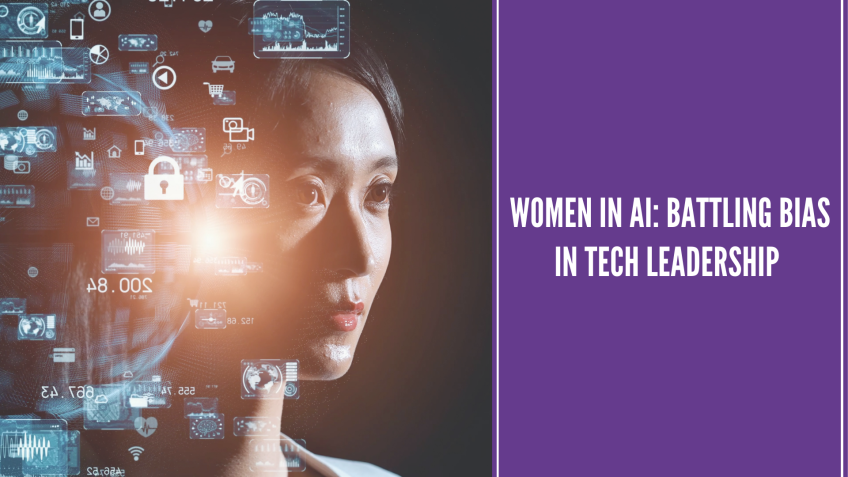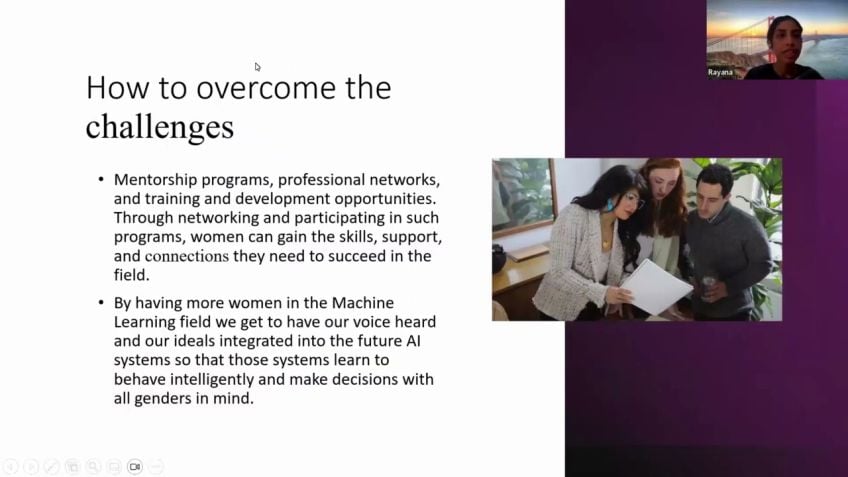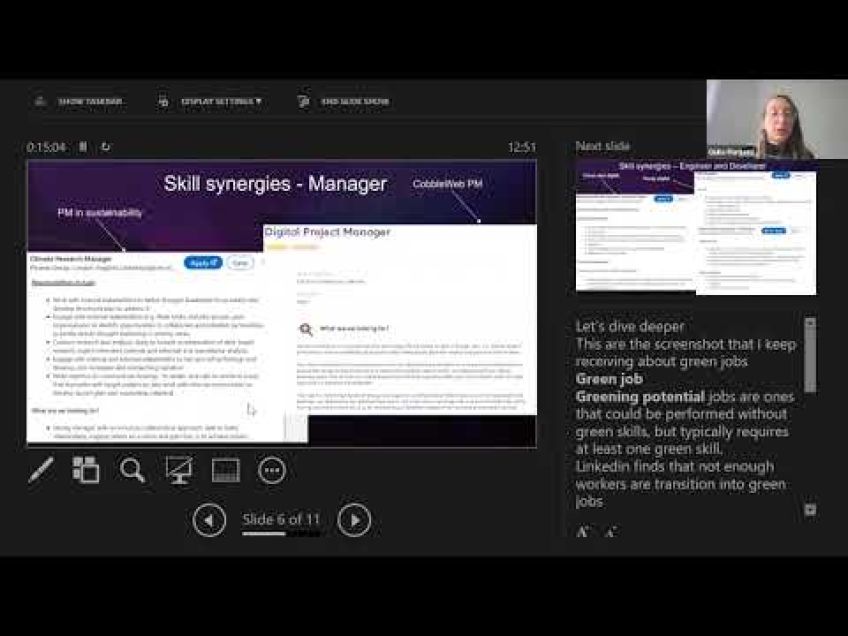Artificial Intelligence and Sustainability: The good, the bad, and the ugly by Patricia Gestoso
Unlocking the Intersection of Artificial Intelligence and Sustainability
Hello, everybody. I'm delighted to be here to discuss a significant and transformative topic, the intersection between artificial intelligence and sustainability.
Who am I?
My name is Patrick Gso, and I juggle three roles professionally. I serve as the Global Director of Scientific Services for a leading software development company specializing in engineering and scientific software. Furthermore, I earned recognition as an Inclusion Strategist in 2020 for my initiatives to enhance diversity and inclusion in technology. Recently, I kick-started my consultancy that aids leaders in integrating diversity into their strategic plans. Lastly, my third role entails steering the helm at a British non-profit that raises awareness about the pros and cons of AI for the general public.
Understanding AI
Before we delve deeper, it is essential to develop a mutual understanding of the terms we will frequently come across in this discussion. Artificial Intelligence (AI) refers to computer systems capable of performing tasks that were traditionally executed by humans. These tasks may involve Machine Learning, a sub-field of AI where systems progressively identify patterns in data to make forecasts. Additionally, techniques like Computer Vision and Natural Language Process enable machines to process visual data and speech-text conversions, respectively.
AI and Sustainability: The Connection
People often question the correlation between AI and the 17 Sustainable Development Goals. AI plays a crucial role in learning from past data and predicting future trends. It enables us to project 'what if' scenarios, which are particularly beneficial in understanding climate change impacts based on our CO2 consumption and emission rates. Here are two primary examples:
- AI for climate change: AI, particularly machine learning, is widely used for disaster prediction, precision agriculture, forest management for CO2 removal, improving vehicle efficiency, and optimizing buildings and cities.
- AI in healthcare: During the COVID-19 pandemic, AI methodologies have shown promise in disease prediction and diagnosis, drug discovery and development acceleration, health monitoring, and hospital resource management.
The Other Side Of AI: The Cost
While the benefits of AI are vast, it's crucial to understand the cost it incurs on our planet and society. The 'cloud' we often refer to is built on data centers and servers that consume enormous amounts of electricity, water, and generate significant CO2 emissions. Furthermore, the impact on people's jobs because of AI cannot be ignored. There are high risks of job displacement along with the creation of low-quality jobs.
Ethical AI: Who Benefits?
A critical part of understanding AI's impact is acknowledging its ethical implications. It's essential to reflect on the power asymmetry in AI where the developers often hold more control over the technology than its users. To illustrate this and the limitations of AI, consider three important examples involving Ecommerce, Google's Dermatology Assist app, and unethical marketing and sales practices.
Regulation: The Need Of The Hour
Thankfully, we are moving towards regulating both data and AI through regulations like GDPR and the California Consumer Privacy Act. However, the gap between the current status and when the regulation truly takes shape is sizeable. Organizations must bridge the gap between intent and impact by embracing sustainable artificial intentions as a practice throughout all stages of development.
Embrace Sustainable AI
I encourage you all to learn and be proactive in questioning new technologies. While it's convenient to assume that new technology equates to progress, that might not always be the case. We need to interrogate the value we obtain, decide who benefits, and identify any potential harms. By adopting sustainable AI practices, we can ensure an ethically balanced and inclusive digital future.
If you are interested in further discussions on this topic, feel free to reach out. I'm also writing a book about successful women in tech and would appreciate your input. Thank you for your time, and I hope you have a fantastic day!
Video Transcription
Hello, everybody. I'm delighted to be here to talk to you about the intersection between artificial intelligence and sustainability. And let me start by introducing myself. My name is Patrick Gso and I wear three hats.The first one, I'm global Director of Scientific Services for a large uh software development company of um uh engineering and scientific software. My background is chemical engineering and computational chemistry. I'm also an inclusion strategist since 20 per head, multiple initiatives uh to uh improve diversity and inclusion in tech. And though that were actually recognized in 2020 with the Women in Tech Change Makers UK Award. And um recently I've open uh I started my own consultancy where I help leaders to uh leverage diversity into their business strategy so they can move from fear and compliance to uh ease an opportunity and uh they can use diversity to reach to tap market, boost innovation and attract and retain that.
And my third heart is as head of diversity, equity and inclusion. And we are a I, we are a non uh British nonprofit that uh uh want to uh further uh the awareness about the benefits and challenges of a I for the broad pop population, we, among the, the our achievements there is we have put together a raise and A I toolkit uh which uh I lead uh the branches of justice and health.
And we lately we launch a new program and called Better Images of A I where we want to challenge the images of robots and blue brains we see all over and we are putting together a free repository of new images CRE created by us. So before we start, let's uh uh agree on some terms related to artificial intelligence. And the first one is what is artificial intelligence, we can define it as computer systems that can perform tasks that were formerly executed only by humans. Like for example, the uh the home assistants like Alexa with whom we exchange, you know, we talk and we ask information too. We another term that we use a lot is machine learning. What is machine learning uh uh is computer systems that interactively identify patterns in data to make predictions of the terminations? And a good example is the difference between a map and a GPS or a S A map. If I live in Manchester, if I want to go to a stop for a paper map is gonna give me certain distance and certain time. Whereas using uh GPS uh SAN A, then I can have a more accurate uh time of arrival because it takes into account uh current data. But also they is is using the prediction for that prediction previous data to reach the the uh that distance between Manchester and stop.
Other artifi artificial intelligent technique is computer vision that actually looks into the ability of machines to process against insights from visual data. For example, if we have tons of tons of photos that in where we have a banana and they are tagged as banana, uh we can use computer vision So to take new images for the absence or the existence of bananas. And then we have as well automated speech recognition and natural language processing that actually looking to processing sp uh speech, to text, text, to understand meaning and so on. And this is what is used. For example, when we Google, we ask Google to translate from one language to the other or again, we ask Google to for a term, but we use our voice rather than uh typing it into the window. So what this has uh so uh those uh different techniques are, you know, is this list is not exhaustive. Uh for example, we have robotic and so on, but they come across in uh often when we talk about artificial intelligence and you, we will see that depending on the technology, you know, we can have 123 or even more uh towards building the solution.
So what this has to do with sustainability and you know, the 17 Sustainable Development Goals, actually, it has to do a lot because uh artificial intelligence can help us to learn from the past from all the data that we have gathered, for example, even during centuries and use them to predict future trends.
Also, it can help us to uh play what if scenarios. And for example, some of you maybe uh uh you know, aware that for example, we have done calculations based on our consumption and our emissions of CO2 about how the temperature of the climate will change in uh for 2013 and 2015. And all of that part of those calculations involve artificial intelligence. So let's just to give you a couple of examples and more uh more tangible. Uh We have A I for climate change uh that we are actually using artificial intelligence, for example, machine learning for disaster prediction, for precision agriculture, for manage better, managing forests to uh for CO2 removal and S questioning uh for improving vehicle efficiency and even uh you know, new forms of transport like self driving cars and also to optimize buildings and cities.
Like for example, when uh we look at the smart cities, another very important area where A I can bring value is in health care. As some of you may be aware during the COVID-19 pandemic, we, you know uh A AAA I uh methodologies have been successfully used to uh uh help in the prediction and diagnosis of a disease to accelerate the drug discovery and development. Also uh e explore health monitoring devices.
For example, there are there is a start up building using A I to uh build an artificial pancreas and even for resource management, for example, in hospitals to try to pair, to do a better pairing between patients and doctors. So imagine the potential for good for benefit is enormous. But this is only part of it because there is a cost of A I, you know, for the planet, for the humans. And also what we will see is that not, although there are benefits of A I, not necessarily the uh everybody benefits actually some, some people benefit less and even some of them get harmed because of it. So uh let's start with the sustainability of A I and the cost of A I for our planet. And for that, we need to uh step away from, you know, the cloud, the transparent um uh screens and realize that all that is is built on data centers and servers that are physical, that they consume a lot of electricity that they need water for cooling. And as that they generate a lot of uh CO2 emissions.
And not only that also when we talk about A I, we are also talking about, you know CPU GP U time uh doing the algorithm development and deployment because in A I as we get more, although you know, the algorithms are in production, they still are gathering data and the process is not there, it's always refined.
And that again is a, is a, is a process. And of course, all those physical data center services screen have a finite, limited uh uh uh a finite life and then we generate in waste that unfortunately, a lot of cases goes to uh countries uh that uh you know, uh are uh developing countries that not necessarily get the benefit of A I.
So we talk a lot about the impact of A E I in people about uh losing jobs. But it is also the creation of a lot of jobs because of A I, although they are not necessarily high quality jobs and here and I'll uh briefly touch in two kinds. One are the annotators and another, the content moderators annotators, for example, in South America in countries like Venezuela where I lived in the past um are paid less than $1 an hour to annotate, annotate. Uh images, annotate means that they look at images and they look at all the objects in the image and they tag them. And uh the people that develop the, the companies that develop se uh self driving cars, for example, they get all those images that have been annotated and they use them to build algorithms that are a to check when you know the the car is driving to understand that you know that blob is a drop of, of rain, whereas that blob is a human and that one is a key, is a cat or a, a tree.
OK. So these people are fundamental to the development of the self driving cars, but they are not getting the benefits, you know, of the huge paychecks, other group uh impacted, you know, with low quality jobs are the content moderators. Again, for example, in Africa that get paid, you know, maybe $1.5 the hour and what they do is again bridging the gap between what the E I does and really, um you know, the limitations, you know, where moderating uh you know, videos and post and they, and basically they spend the, the the their job is to spend uh to, to look at flag videos and um and uh images that sometimes contain, you know, rape murders, uh porno pornographic content and pass it and see, you know, what needs to be removed or not again, pay $1.5 the hour.
And that is the other side about who benefits. And this is what we look at ethical A I. And the problem why we need to look at this closely is because our assumptions around technology that are built on how we handle technology different than for example, other organizations like food or you know, other industries like healthcare. We assume that technology is neutral.
We also believe that data is objective or that algorithms are un bias because they are mathematics. But actually the reality is that in A I there is a power in asymmetry because the developers of, you know, people us working for companies that develop A I have more power than the users of the planet that are, you know, uh using or are benefiting or not of the technology. So let me uh give you a coup uh uh you know, three examples to show you that actually those assumptions don't uh uh don't hold true. So the first one is about uh ecommerce. And here we see a graphic of the predict and prediction of UK E commerce in 2018, as you see here, uh you know, from 26 to 2020 Ecommerce was growing in the UK and you know, the prediction was, it will continue to grow in 2021 hope. However, CO COVID hit. And as a lot of you may know, suddenly we had a big peak on e commerce that didn't match the prediction. And this is because uh A I is not, is good about predicting the future based on the past. But when things change, they are A I is not good at adapting. The next is an example on healthcare. Last year, Google released their Google Dermatology Assist app uh which in theory was a great tool.
You know, basically you just needed to have three photos or of a skin nail or hair condition, give it to the app. And the app was able to tell you uh to suggest if you have one of 2288 conditions looks great. However, when their uh their methodology experts look at the data that was used, what they realize is that even if they have a lot of data, we are talking about 40,000 images and 12 12,000 patients. Actually, uh if we look at the color of their skin, 90% were of fair skin, light skin. So as you can imagine here, there was, you know, you can judge that the quality, the performance is not gonna be the same when you use the app if you have fair skin, that if you have brown or dark skin, OK? Even if the technology is the same. And the third example, uh we uh that uh that show us, you know, that the ethical issues around A I is that marketing and sales of certain pro A I products have done uh rather unethical um um approach to show the value of those apps, basically, what they have done is automate the snake oil.
So for example, we have apps now that they promise us that their A I is able to just check a photo and tell us the sex uh preferences of the person or that they can tell us if you know a child is angry, disappointed or sad. Just by looking at the photo. A third one, we even have a hr um apps that say that just by analyzing one minute of a candidate, uh they are able to tell something that's so complex as personality. So as you see here A I is actually used to sell, you know, a capability that doesn't have any scientific basis whatsoever. So the good news is that winter is coming, there is regulation both at the level of data and at the level of A Y I that is, that is being discussed and voted out in both EU and also in uh the US, some of you may uh be aware of uh GDPR as well as the California Consumer Privacy Act.
And for a A there is also in this uh you know, since 2020 there are uh uh uh uh several regulations. However, that is not enough because there is a huge gap in time between our current status and actually the uh the, the uh um when the regulation appears. So we do need as an organization to understand that not because we want to be ethical, that means that it's gonna happen. We need to bridge the gap between intent and impact and how we do that. We need to embrace sustainable artificial intentions as a practice that is at all points of the development, that means from aviation to use of research, co creation testing and of course deployment, but also sales marketing and services. At each step, we need to interrogate, you know, the value we get, who gets the benefits and who actually gets the harms. So I'm asking you to do two things first learn on your own. You have already been in this, in, in this talk and I hope you share uh what you learned with your colleagues. And also please do visit us for uh completely free at we and A I and look at our race and A I toolkit.
The other way is actually be proactive questioning new technology. We have this impression that just because it's, it's technology, it means progress, it do it, it's not necessarily 1 to 1 relationship. So when you are presented with a new technology, ask questions, for example, why not a more transparent, simple technology can do, cannot do the job. Second who is creating that technology, how that Hr R and D team looks like third, how the performance of the A I system is monitored in time. Um And then how much this technology consumes. So look, take away, look at both benefits and challenges of A I regulation is coming. We need to embrace sustainable A I as a practice and action for you, learn and question I love for you. Uh I love to continue this conversation. Please do reach out to me this in the Q. This is the Q, the QR uh um you know, if you take a photo of the PR code, you will also find a survey. I'm writing a book about how women succeed in, in tech and I love to have your feedback. Thank you so much. And uh I uh wish you a fantastic day. Thank you very much.

